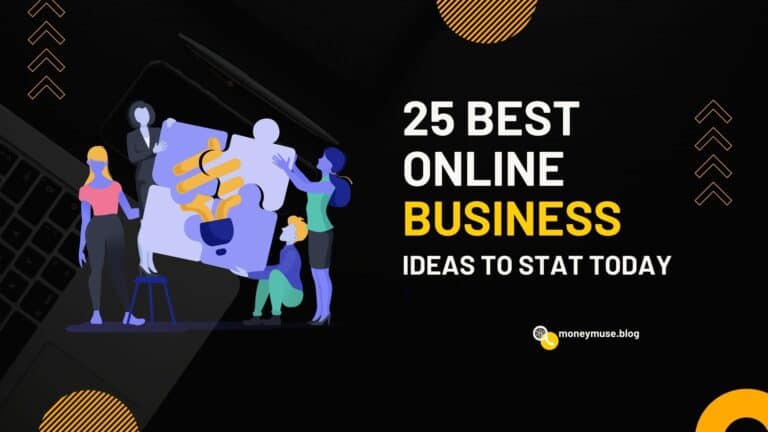How to set up a blog using platforms like WordPress and Blogger
Starting a blog is a powerful tool that can help you connect with others and share your thoughts, ideas, and interests with the world. Blogging can be used for various purposes, such as building a personal brand, growing a business, or simply sharing a hobby with others. The popularity of blogging has led to the development of many different platforms. That makes it easy for anyone to create a blog, regardless of their technical expertise.
WordPress and Blogger are two of the most widely used platforms for creating blogs. Both platforms offer a wide range of features and benefits that make them ideal for beginners and experienced bloggers. This post will explore the steps you need to take to set up a blog using either of these platforms.
WordPress is an open-source content management system (CMS) that allows users to easily create and manage a blog or website. One of the key benefits of using WordPress is its flexibility in terms of customization and design. Users can choose from thousands of pre-made templates or create designs using the platform’s built-in tools. WordPress offers a wide range of plugins and add-ons that can be used to add functionality and enhance the user experience.
Blogger, on the other hand, is a free blogging platform owned by Google. It’s a more straightforward platform than WordPress but still offers a wide range of features and templates that can be used to create a professional-looking blog. Blogger is easy to use and an excellent option for beginners just starting with blogging. The platform also offers integration with other Google services, such as Google Analytics, which can be used to track your blog’s performance.
This post will walk you through setting up a blog using either of these platforms. We will cover everything from choosing a hosting provider and installing the platform to customizing your blog’s design and layout and adding content. By the end of this post, you will have the knowledge and tools you need to start your own blog and begin sharing your thoughts, ideas, and interests with the world.

I. Introduction to WordPress and Blogger
A. Overview of the features and benefits of each platform:
- WordPress: WordPress is an open-source content management system (CMS) that allows users to easily create and manage a blog or website. It offers a wide range of features, including customizable templates, built-in tools for designing and editing pages, and a vast library of plugins and add-ons that can be used to add functionality and enhance the user experience. WordPress is also highly scalable, making it suitable for small personal blogs and large enterprise-level websites.
- Blogger: Blogger is a free blogging platform owned by Google. It’s a more straightforward platform than WordPress but still offers a wide range of features and templates that can be used to create a professional-looking blog. Blogger is easy to use and an excellent option for beginners just starting with blogging. The platform also offers integration with other Google services, such as Google Analytics, which can be used to track your blog’s performance.

B. Comparison of the pros and cons of using WordPress and Blogger:
- WordPress: Pros:
- High level of customization and flexibility
- Extensive library of plugins and add-ons
- Suitable for small personal blogs and large enterprise-level websites
- High scalability
Cons:
- Requires some technical knowledge to set up and manage
- It can be more expensive than other platforms due to the cost of hosting and add-ons
- Blogger: Pros:
- Easy to use
- Great for beginners
- Integration with other Google services
- Free to use
Cons:
- Limited customization options
- Less scalability compared to WordPress
- Limited opportunities for adding functionality and enhancing the user experience.
Ultimately, the choice between WordPress and Blogger will depend on your specific needs and your required customization and scalability. Both platforms offer a wide range of features and benefits, and by the end of this post, you will have the knowledge and tools you need to make an informed decision and set up a successful blog using either of these platforms.

II. Setting up a blog using WordPress
A. Choosing a hosting provider:
When setting up a blog using WordPress, the first step is to choose a hosting provider. A hosting provider is a company that provides the servers and technology needed to host your website on the internet. There are many different hosting providers to choose from, and the best one for you will depend on your specific needs and budget. Some of WordPress’s most popular hosting providers include Bluehost, SiteGround, and DreamHost.
When choosing a hosting provider, it’s important to consider reliability, uptime, and customer support factors. You should also consider the amount of storage and bandwidth included with your plan and any additional features or services that may be offered.
B. Installing WordPress:
Once you have chosen a hosting provider and set up your account, the next step is to install WordPress. Most hosting providers offer a one-click installation process, making it easy to start with WordPress. Installing WordPress typically involves logging into your hosting account, selecting WordPress from a list of available applications, and following the on-screen instructions.
Some hosting providers may require you to manually install WordPress, which is more technical. However, many providers offer tutorials and guides to walk you through the process.
Once WordPress is installed, you will be prompted to create a username and password for your new WordPress site. You will also need to choose a title and a tagline for your blog, select a theme and customize the design. Once this is done, you can start adding content to your new blog.

C. Customizing your blog’s design and layout:
Once you have installed WordPress and set up your blog, the next step is to customize the design and layout to make it look and feel the way you want. WordPress offers a wide range of customizable templates, called themes, that can be used to change the look and feel of your blog. These themes can easily be installed and activated from the WordPress repository or third-party developers.
Themes typically come with various options to change the layout, colors, fonts, and other design elements. Some themes also come with pre-designed page templates that can create specific types of pages, such as landing pages, portfolios, and contact pages.
In addition to themes, WordPress also offers a wide range of plugins that can add functionality and enhance the user experience. These plugins can add features such as contact forms, social media integration, and e-commerce functionality.
D. Adding content to your blog:
Once your blog is set up and customized to your liking, the next step is adding content. WordPress uses a system called posts and pages to organize content. Posts are used to create blog entries and are typically displayed in reverse chronological order on your blog’s homepage. Pages create static content, such as an “About” page or a “Contact” page.
To add a new post or page, log into your WordPress dashboard and navigate to the “Posts” or “Pages” section. Create a new post or page using the built-in editor. The editor allows you to add text, images, videos, and other media types to your content. Additionally, you can add categories and tags to your posts to help organize your content and make it easier for your visitors to find what they’re looking for.
In conclusion, customizing the design and layout of your blog, as well as adding content, are essential steps in setting up a blog using WordPress. WordPress offers a wide range of customization options and plugins that can make your blog look and feel the way you want, while its intuitive interface makes it easy to add and manage content. By following these steps, you will be able to create a professional-looking blog that is tailored to your specific needs and interests.

III. Setting up a blog using Blogger
A. Creating a Google account:
The first step in creating a blog using Blogger is creating a Google account. If you already have a Gmail account, you can use that account to sign in to Blogger. If you still need to, you must create a new account by visiting the Google account creation page and following the prompts.
B. Setting up your Blogger account:
Once you have a Google account, you can set up your Blogger account by visiting the website and clicking the “Create your blog” button. From there, you will be prompted to sign in with your Google account, and then you will be taken to the Blogger dashboard.
C. Customizing your blog’s design and layout:
Blogger offers a variety of templates that you can use to change the look and feel of your blog. These templates can be easily installed and activated from the Blogger repository. The templates typically have various options to change the layout, colors, fonts, and other design elements.
Additionally, Blogger allows you to add widgets to your blog, which can be used to add functionality such as social media integration, contact forms, and more.

D. Adding content to your blog:
Once your blog is set up and customized to your liking, the next step is adding content. In Blogger, you can create new posts by clicking the “New post” button in the dashboard. You can use the built-in editor to add text, images, videos, and other media types to your post. Additionally, you can add labels to your posts to help organize your content and make it easier for your visitors to find what they’re looking for.
In conclusion, setting up a blog using Blogger is a simple process that can be accomplished in a matter of minutes. The platform offers a wide range of customizable templates, widgets, and easy-to-use tools for creating and managing content.
Additionally, Blogger offers integration with other Google services, such as Google Analytics, which can be used to track your blog’s performance. With this guide, you can start your blog using Blogger and begin sharing your thoughts and ideas with the world.

Conclusion
In conclusion, starting a blog is a powerful tool that can help you connect with others and share your thoughts, ideas, and interests with the world. Blogging can be used for various purposes, such as building a personal brand, growing a business, or simply sharing a hobby with others. The popularity of blogging has led to the development of many different platforms. That makes it easy for anyone to create a blog, regardless of their technical expertise. WordPress and Blogger are two of the most widely used platforms for creating blogs.
WordPress and Blogger offer a wide range of features and benefits that make them ideal for beginners and experienced bloggers. WordPress is an open-source content management system (CMS) that allows users to easily create and manage a blog or website with high customization and flexibility. Blogger is a free blogging platform owned by Google, which is simple to use and great for beginners.
In this post, we have walked you through setting up a blog using either of these platforms, from choosing a hosting provider to customizing your blog’s design and layout and adding content. We also discussed the pros and cons of each platform to help you make an informed decision on which platform best fits your needs.
Setting up a blog using popular platforms like WordPress and Blogger is a straightforward process that can be accomplished with a bit of time and effort. With this guide, you now have the knowledge and tools to start your own blog using either of these platforms and start sharing your thoughts and ideas with the world.







